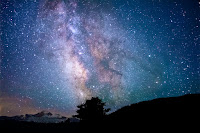The Final Temple
In the second chapter of the Gospel of John, the disciples learn that Jesus is the True and Final Temple of God. The era of God “dwelling” in portable tents in the wilderness or stone buildings in Jerusalem came to an end with the arrival of Israel’s Messiah. God does not dwell in structures “made-by-hand,” nor can His presence be contained within physical walls or geographic boundaries.
 |
| [Photo by Jeremy Thomas on Unsplash] |
After the Passover celebration, Jesus “went up to Jerusalem” to visit the Temple. There, he observed financial transactions taking place in the “Court of the Gentiles.” This produced the incident when the Messiah “cleansed the Temple” and overthrew the tables of the moneychangers:
- (John 2:13-16) – “And near was the Passover of the Jews. And Jesus went up to Jerusalem. And he found in the temple them that were selling oxen and sheep and doves, also the moneychangers sitting. And making a scourge out of rushes, he drove out all of them, both the sheep and the oxen. And the moneychangers’ small coins poured he forth, and the tables he overturned. And to them who were selling the doves, he said, Take these things hence! Be not making the house of my Father a house of merchandise.”
The Temple was the center of the Jewish
faith, especially its prescribed sacrifices, annual feast days, and related
rites. The hostile reaction by certain “Jews” to the actions of Jesus
illustrates the words from the prologue of John – “He came to
his own and those who were his own did not receive him” - (John 1:11).
From the start, the Nazarene was opposed by
the leaders of the Temple. In this incident, they sent representatives to ask him
for a sign that would demonstrate his authority to act as he did.
Jesus was in the “Temple.” In this
passage, the English term translates the Greek noun hieron and
refers to the entire temple complex (Strong’s - #G2411). However, in verse
19, the term naos is found on his lips (Strong’s - #G3485),
not hieron (“Destroy this SANCTUARY
and in three days I will raise it”).
This last term, naos, refers to
the Sanctuary proper within the larger complex, including the
“Holy of Holies,” the inner sanctum where the presence of Yahweh dwelt.
- (John 2:17-22) – “His disciples remembered that it was written, The zeal of thy house is consuming me. The Jews, therefore, answered and said to him, What sign do you point out to us in that these things you are doing? Jesus answered and said to them, Destroy this sanctuary and in three days I will raise it. The Jews, therefore, said, In forty and six years was this sanctuary built, and you in three days will raise it! But he was speaking concerning the sanctuary of his body. When, therefore, he had been raised from among the dead, his disciples remembered that this he had been saying, and they believed in the Scripture and in the word which Jesus had spoken.”
POINTING TO HIS RESURRECTION
After his resurrection, the disciples
remembered the passage cited from the Psalms by Jesus. In the Hebrew Bible, it
has a past tense verb, “The zeal of your house CONSUMED me." But
in John, the verb tense becomes future, “The zeal of your
house WILL CONSUME me” - (Psalm 69:9: “Because zeal for thy house hath eaten me up”).
The Greek verb rendered “consume”
or katesthiō is a compound of the verb for “eat” (esthiō)
and the preposition kata or “down” (Strong’s - #G2719).
The compound form intensifies the sense of esthiō so it
denotes “to eat up, to consume entirely.” Thus, his focused zeal demonstrated
in his “cleansing” the Court of the Gentiles contributed to his arrest, trial,
and execution - (Matthew 26:60-61, 27:40, Mark 14:58, 15:29).
Jesus responded to his critics. If they
destroyed “this sanctuary,” he would raise it “after three days.” His
opponents took his words literally, and so misunderstood his meaning. John adds
a comment so his readers will not make the same mistake - “But he was
speaking of the SANCTUARY [naos] of his body.”
Jesus declared himself to be the True
Sanctuary, the Naos of God. His opponents would destroy “that
Sanctuary” when they put him to death. After his resurrection, the
disciples would remember this saying and “believe the Scripture.”
Thus, the Gospel of John presents
Jesus as the True and Greater Temple. Unlike the manmade stone structure in
Jerusalem, this one would never be destroyed. He has become the permanent
dwelling place of the glory of Yahweh.
In Jesus of Nazareth, the presence of God
no longer is restricted to any structure “made-by-hand” in
Jerusalem or any other holy site. Nor is it regulated by the calendar and holy
days. The Divine glory is seen forevermore in the face of Jesus Christ for all
men to behold - (2 Corinthians 3:18-4:6).


Comments
Post a Comment